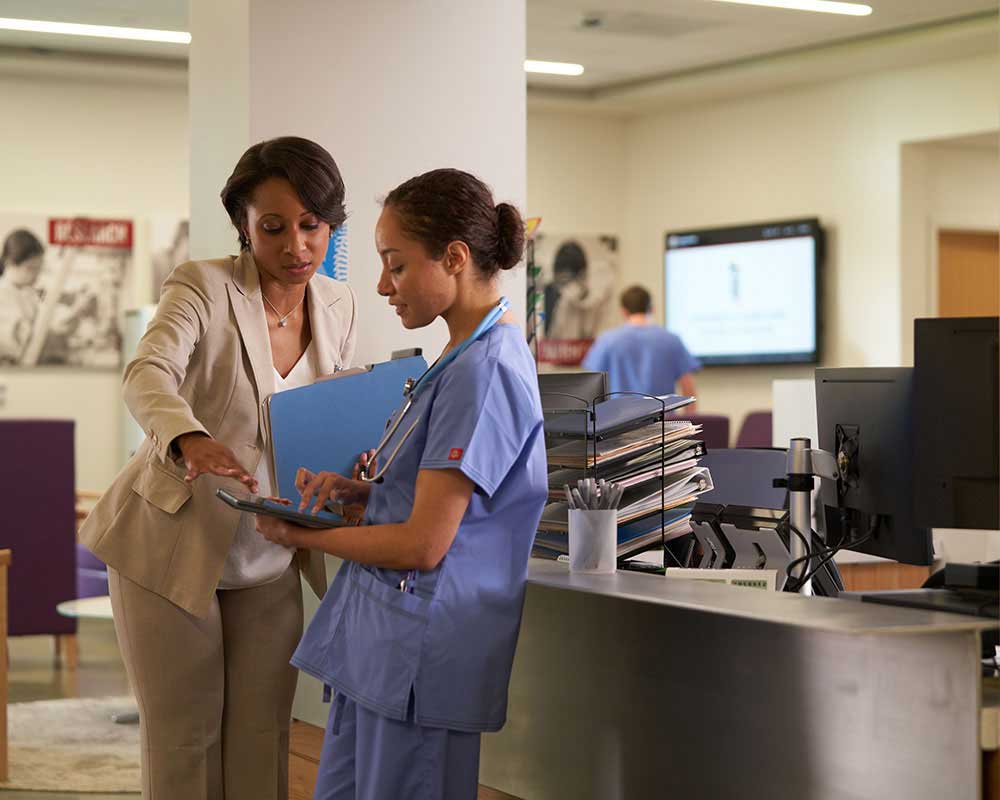The Significance of Medical Administration in Health Care Administration
The Significance of Medical Administration in Health Care Administration
Blog Article
Ideal Practices in Medical Administration for Improving Effectiveness and Lowering Expenses
In the ever-evolving landscape of healthcare, the quest of finest practices in clinical management is paramount for improving effectiveness and curbing expenditures. By integrating sophisticated innovations such as electronic health documents and telemedicine, health care companies can enhance procedures and enhance patient care.
Leveraging Advanced Modern Technology
The assimilation of digital options right into medical care systems has changed the means centers run, streamlining processes and enhancing individual care. By centralizing patient details, EHRs get rid of the requirement for difficult documentation and assist in smooth communication among healthcare carriers.
Telemedicine is an additional technical innovation that has actually reinvented individual communication. It provides comfort for both clients and medical care professionals by enabling remote consultations, which can lower the requirement for in-person brows through and optimize consultation scheduling. Furthermore, telehealth platforms can prolong medical care accessibility to rural or underserved locations, linking gaps in care shipment.
Moreover, the usage of Expert system (AI) and maker learning is ending up being significantly prevalent in anticipating analytics, permitting very early detection of prospective health and wellness concerns and more educated decision-making. These technologies, when incorporated successfully, can enhance analysis accuracy and individualize patient treatment plans, eventually causing enhanced health care end results and functional effectiveness.
Optimizing Source Allowance
Reliable resource allotment is crucial for optimizing the performance of clinical administration. By purposefully taking care of sources such as personnel, devices, and finances, medical care centers can substantially improve their operational efficiency, improve patient outcomes, and lower unnecessary expenditures. The first action in enhancing source allocation entails conducting a comprehensive analysis of existing properties and determining areas where resources might be underutilized or overextended. This assessment must be data-driven, utilizing metrics and analytics to inform decision-making procedures.
Focusing on source allocation based on individual needs and solution needs is essential. This involves lining up resources with high-demand areas, such as emergency treatment or specialized treatments, to make sure timely and effective client treatment. Executing flexible staffing designs can likewise optimize labor resources by adjusting workers allocation in action to rising and fall client quantities. Additionally, welcoming telemedicine and other technological solutions can reduce physical resource constraints by supplying alternate avenues for patient-provider communications.
Funds need to be thoroughly kept track of and designated with tactical foresight to support both short-term operational needs and lasting institutional objectives. This consists of investing in training programs that improve personnel competencies and embracing energy-efficient methods that minimize functional expenses (medical administration). Eventually, an enhanced resource allotment strategy cultivates a lasting health care atmosphere that is receptive, reliable, and economically prudent
Streamlining Workflow Procedures
When healthcare facilities goal to boost functional efficiency, enhancing process processes comes to be a crucial focus. Effective workflows lessen redundancy, remove unnecessary steps, and enhance coordination amongst medical care experts. This technique not only speeds up service distribution but likewise boosts the top quality of individual care.

Next, innovation assimilation plays a considerable role in simplifying operations. Implementing electronic health documents (EHRs) and electronic medical professional order entrance (CPOE) systems minimizes documentation, decreases human mistake, and ensures details comes to all pertinent employees. In addition, leveraging telemedicine systems can improve patient consultations and follow-ups, decreasing the strain on physical framework.

Ultimately, structured process result in cost decreases and enhanced person satisfaction, fostering a much more sustainable medical care setting.
Enhancing Information Administration
Structure upon streamlined workflows, optimizing information management ends up being a vital part ahead of time medical care administration. Reliable data administration systems are important for maintaining exact patient records, improving decision-making, and making certain compliance with governing standards. By applying robust data management options, medical care centers can boost the high quality of client care while at the same time reducing functional prices.
One trick facet of enhancing information administration is the this page integration of sophisticated electronic wellness record (EHR) systems. These systems facilitate the smooth exchange of client info across different divisions, lowering replication of tests and reducing errors. A well-designed EHR system sustains information analytics, enabling doctor to determine patterns and make educated decisions relating to patient care.
Furthermore, protecting person data is critical. Embracing detailed cybersecurity steps, including file encryption and routine audits, ensures the stability and confidentiality of sensitive info. This not just protects clients yet likewise preserves the institution's online reputation.
Purchasing team training is one more critical element. Enlightening healthcare experts on data management techniques enhances their capability to effectively utilize modern technology, leading to enhanced individual results. Finally, boosting data management through advanced innovation and extensive training is important for attaining efficiency and expense decrease in clinical administration.
Fostering Collaborative Communication
An essential part in advancing clinical management is promoting collective interaction amongst healthcare professionals. Effective communication is extremely important for guaranteeing seamless patient treatment, optimizing therapy results, and reducing errors. By motivating open discussion and sychronisation across multidisciplinary teams, healthcare organizations can enhance their functional performance and minimize unnecessary costs.
Central to this this website strategy is the integration of interaction modern technologies such as electronic health and wellness documents (EHRs) and protected messaging systems, which promote the rapid exchange of critical patient information. These devices allow doctor to access and share data in genuine time, ensuring that all employee are educated and lined up in their decision-making processes. Normal team meetings and interdisciplinary rounds can even more promote a culture of partnership and responsibility.
Educating programs concentrated on enhancing interaction skills are also vital. Ultimately, promoting collaborative communication leads to improved healthcare shipment and cost financial savings.

Verdict
Integrating innovative technology, such as electronic wellness records and telemedicine, alongside enhanced source allocation and streamlined operations procedures, is essential for improving performance in medical administration. Effective information monitoring and fostering collective interaction amongst health care groups are important for lessening redundancies and enhancing treatment top quality. By prioritizing precautionary care and participating in quality improvement campaigns, medical care organizations can accomplish significant cost financial savings and enhanced client results, consequently guaranteeing sustainable healthcare delivery in an increasingly complex setting.
Report this page